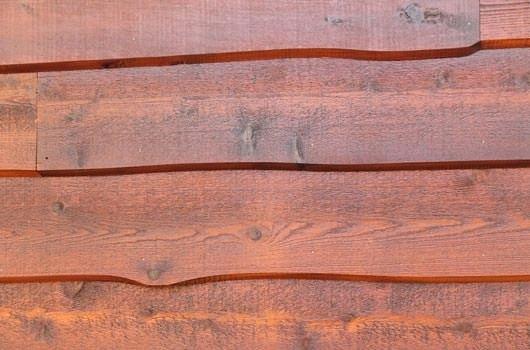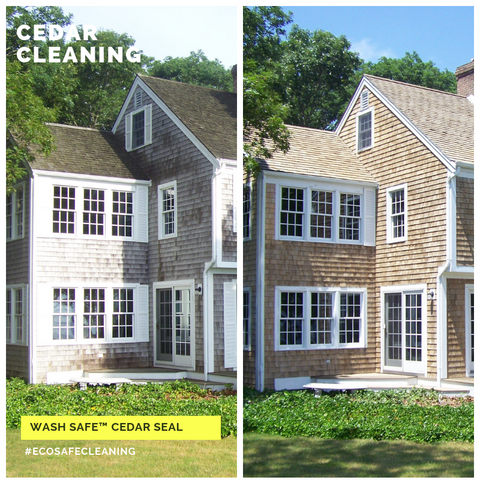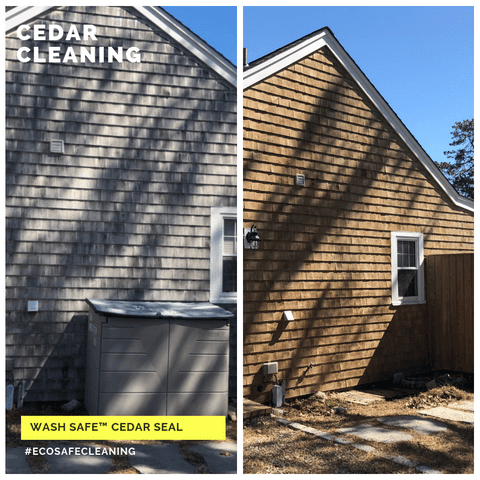Sealing cedar siding protects your home. It enhances the wood’s beauty and longevity.
Cedar siding is a popular choice for its natural look and durability. But without proper care, it can weather and lose its charm. Sealing cedar siding helps maintain its appearance and shield it from the elements. This process not only preserves the wood but also extends its lifespan.
Plus, it keeps your home looking fresh and inviting. In this guide, we’ll explore the steps to seal cedar siding effectively. You’ll learn about the materials needed, the best practices, and tips for a lasting finish. Let’s dive in and keep your cedar siding looking great for years.
Introduction To Cedar Siding
Cedar siding is a popular choice for homes. It looks beautiful and is very durable. Cedar also has natural oils. These oils help protect the wood from insects and rot. Many people love the natural look of cedar. It can be stained in many colors. It can also be left to age naturally.
Cedar siding offers many benefits. It is very strong and can last a long time. Cedar is also a good insulator. This means it helps keep your home warm in winter and cool in summer. Cedar siding is also resistant to warping and splitting. It is easy to work with and can be cut to fit any design.
While cedar is strong, it can have some issues. Moisture can cause problems. If cedar gets too wet, it can rot. Cedar can also attract insects. It needs to be sealed to keep it safe. Without proper care, cedar can fade and lose its beauty. Regular maintenance is needed to keep cedar siding looking its best.

Credit: www.youtube.com
Choosing The Right Sealant
Protect cedar siding by choosing the right sealant. Ensure long-lasting beauty and durability with a quality product. Keep your home looking fresh and well-maintained.
Types Of Sealants
There are different types of sealants. Oil-based sealants are popular. They provide a natural look. Water-based sealants dry quickly. They are easy to clean. Some people prefer acrylic sealants. They are durable and resist UV rays. Hybrid sealants combine oil and water benefits. Choose the best for your needs.
Factors To Consider
Consider the climate in your area. Some sealants work better in wet climates. Others are good for dry areas. Think about maintenance too. Some sealants need reapplying often. Others last longer. Appearance is important. Some sealants darken the wood. Others keep it light. Check the environmental impact. Some products are eco-friendly. Others are not.
Preparing Cedar Siding For Sealing
Cleaning and sanding cedar siding prepares it for sealing. Remove dirt and old paint. Ensure a smooth surface for best results.
Cleaning The Surface
First, clear all dirt and debris from the cedar siding. Use a soft brush and a mild detergent. Rinse with clean water. Dry the siding completely before the next step. This ensures a smooth surface for sealing.
Repairing Damages
Look for any cracks or holes. Fill them with wood filler. Sand the filled areas until they are smooth. Check for any loose boards. Secure them with nails or screws. This keeps the cedar siding sturdy and ready for sealing.
Applying The Sealant
Gather all necessary tools. You need a paintbrush, roller, or sprayer. Use a good quality sealant. Have a ladder ready if the siding is high. Wear protective gloves and goggles. Keep a clean cloth nearby for spills.
Start by cleaning the cedar siding. Remove all dust and dirt. Let it dry completely before applying the sealant. Apply the sealant evenly with a brush, roller, or sprayer. Use smooth, even strokes. Cover all areas well. Allow the first coat to dry. Apply a second coat if needed. Check for any missed spots. Clean up any spills right away. Let the sealant dry completely before touching the siding. Your cedar siding is now protected and ready to withstand the elements.
Drying And Curing Process
Cedar siding needs dry weather for proper sealing. Sunny days are perfect. Avoid rainy days. Humidity should be low. Wind can help too. Dry air works best. Choose a warm day. Not too hot, not too cold. 50-80°F is ideal. These conditions help the sealant dry well.
Sealing cedar siding takes time. 24 to 48 hours is common. It depends on the weather. Warm, dry air speeds it up. Wet or cold days slow it down. Patience is key. Check the sealant instructions. Follow the drying times listed. Do not rush the process. Proper drying ensures a strong seal.
Maintaining Sealed Cedar Siding
Check your cedar siding every few months. Look for cracks or damage. Spotting issues early helps prevent bigger problems. Check for mold or mildew too. Clean them with a mild solution. Look at the sealant. Make sure it still covers the wood well. Replace damaged parts quickly.
Reapply sealant every few years. This keeps the wood safe. Clean the siding first. Remove dirt and old sealant. Choose the right sealant for cedar wood. Follow instructions on the sealant. Apply a thin layer evenly. Let it dry completely.
Common Mistakes To Avoid
Skipping proper cleaning can ruin your project. Dirt and old paint need removal. Use a soft brush and mild soap. Rinse well and let it dry. Wet wood will not hold sealant. Sand rough spots for a smooth finish. Your sealant will stick better.
Not all sealants work on cedar. Check the label before buying. Some sealants block cedar’s natural oils. This can cause damage. Use a sealant made for cedar. Oil-based sealants work best. They let the wood breathe. They also add extra protection.

Credit: www.longhousecedar.com
Environmental Considerations
Using eco-friendly sealants helps protect the environment. These sealants contain fewer harmful chemicals. They are safer for plants and animals. Water-based sealants are a good option. They release fewer fumes. This makes them safer for the air.
Choose sealants with low VOCs. VOCs are volatile organic compounds. They can harm your health. They also harm the environment. Check the product label for VOC levels. Lower VOCs mean safer sealants.
The sealant you use can affect the surroundings. Eco-friendly options reduce this impact. They keep the soil and water clean. This is important for gardens and wildlife.
Some sealants can damage plants. They might even kill them. Avoid using harsh chemicals. Safer sealants protect your landscape. They also protect pets and kids. Always read the instructions. Follow them carefully.
Cost And Budgeting
The cost to seal cedar siding depends on several factors. First, the size of your home impacts the price. Larger homes need more sealant. The type of sealant also matters. High-quality sealants cost more but last longer. You might also need to pay for labor if not sealing yourself. Remember to check prices at different stores. Look for sales and discounts. This can help you save some money.
Buy sealant in bulk to save money. Larger quantities often cost less per unit. Consider doing the work yourself if you have time. This can save on labor costs. Borrow or rent tools instead of buying new ones. Look for free online tutorials to learn the process. Ask friends or family for help. This can make the job easier and faster.

Credit: washsafe.com
Conclusion And Final Tips
Seal cedar siding properly to protect it from weather damage. Ensure the wood is clean and dry before applying the sealant. Regular maintenance will keep your cedar siding looking great for years.
Summary Of Key Points
Seal cedar siding to protect it from weather damage. Clean the wood first. Use a mild detergent and water. Let the wood dry completely. Apply a sealer with UV protection. Use a brush for best results. Reapply sealer every few years for lasting protection. Avoid using harsh chemicals. Choose eco-friendly products when possible.
Additional Resources
For more details, check online guides and tutorials. Visit home improvement stores for expert advice. Consult with professionals if needed. Read product labels carefully. Follow all safety instructions. Look for community forums for tips and experiences.
Frequently Asked Questions
How Often Should You Seal Cedar Siding?
Cedar siding should be sealed every 3 to 5 years. This helps maintain its appearance and protect it from weather damage.
What Is The Best Sealer For Cedar Siding?
The best sealer for cedar siding is a high-quality, UV-resistant, water-repellent sealer. Look for products specifically designed for cedar wood.
Can You Pressure Wash Cedar Siding Before Sealing?
Yes, you can pressure wash cedar siding before sealing. This removes dirt and mildew, ensuring a clean surface for the sealer.
How Long Does Cedar Siding Sealer Last?
Cedar siding sealer typically lasts between 3 to 5 years. This depends on weather conditions and maintenance.
Conclusion
Sealing cedar siding protects it from weather and extends its lifespan. It’s a simple process that ensures your home looks beautiful for years. First, clean the siding thoroughly. Next, choose the right sealant for cedar wood. Apply evenly and carefully.
Regular maintenance is key. Check for any damage and reapply sealant as needed. With these steps, your cedar siding will stay strong and vibrant. Enjoy the natural beauty of cedar while keeping it well-protected. Your home deserves the best care.

